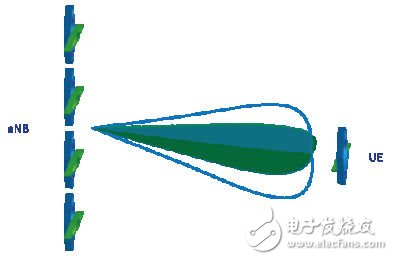Currently, TD-LTE, FDD-LTE, and LTE-Advanced (LTE-A) wireless technologies use several different multiple input multiple output (MIMO) technologies. Given the increasing complexity of MIMO systems, the associated test methods will be more challenging. For example, currently deployed MIMO technology utilizes two antennas to improve channel performance. There are also some LTE communities that have taken the lead in adopting eight-antenna technology to achieve higher performance. These advanced technologies will make the choice of test methods even more critical. To find the right approach, you must fully understand the antenna technology used in each version of LTE. For example, beams are a key feature of TD-LTE. Although it is an attractive transmission scheme in some scenarios (such as open rural areas or hotspot coverage), it is not always the best approach. Beamforming can increase the signal-to-noise ratio (SNR) of the received signal in the cell, thereby increasing coverage or improving the user experience in the cellular edge region. It also limits the range of signals spatially to minimize interference. In areas where the signal-to-noise ratio is sufficient, beamforming does not improve the data rate. By spatially multiplexing concurrent data streams, MIMO can increase data throughput under low correlation, high signal to noise ratio channel conditions. To optimize MIMO data rates, TD-LTE uses components that contain eight antennas. In Figure 1, four antennas (shown in blue) physically form the same angular polarization, while the other four antennas (shown in green) form a physically orthogonal relationship with the previous four antennas. . The two sets of four antenna components can enhance the signal to noise ratio by forming a beam directed to a specific user equipment (UE). Two orthogonally polarized beams can effectively mimic two existing low correlation antennas, even if the actual spatial correlation is high. Therefore, this antenna configuration can expand coverage and enable a wider range of high data rate transmissions (Figure 2). In addition to TD-LTE, eight-antenna technology can also be used for FDD-LTE. The network operator can utilize the antenna configuration to enhance the uplink receiving effect and solve the problem of low power user equipment link budget limitation. The RAN1 working group of 3GPP is actively discussing the practical deployment of eight-antenna technology in LTE-A.
A flourishing enterprise in this domain, engaged in presenting a wide range of Battery for UPS. The provided batteries are manufactured using different configurations, processes, battery backups, capacitates, and online options. Also, clients are facilitated to choose batteries from us having both online and manual systems. All installed batteries can bear the input power supply in-between 145V to 280V. The frequency rate of each battery is 50/60Hz. Moreover, entire battery systems provide the backup starting from 13minutes to 16 hours depending upon the usage.
100Ah 12V Solar Battery,12V Solar Battery,100Ah Solar Battery,Deep Cycle Solar Battery 12V 100Ah Yangzhou Bright Solar Solutions Co., Ltd. , https://www.cnbrightsolar.com
Figure 1: A TD-LTE eNodeB antenna configuration that can be used to optimize MIMO data rates 
Figure 2: An 8&TImes;2 beamforming system that forms orthogonally polarized beams